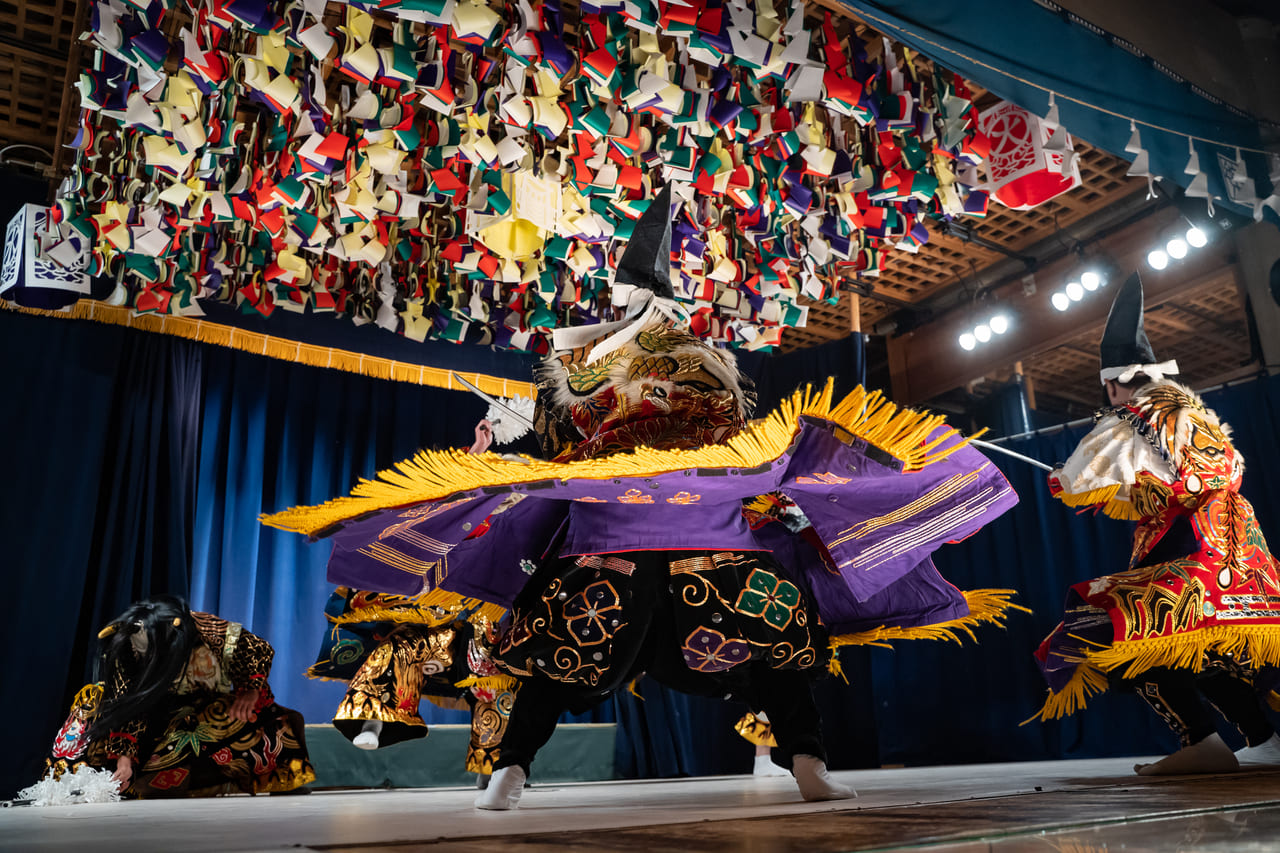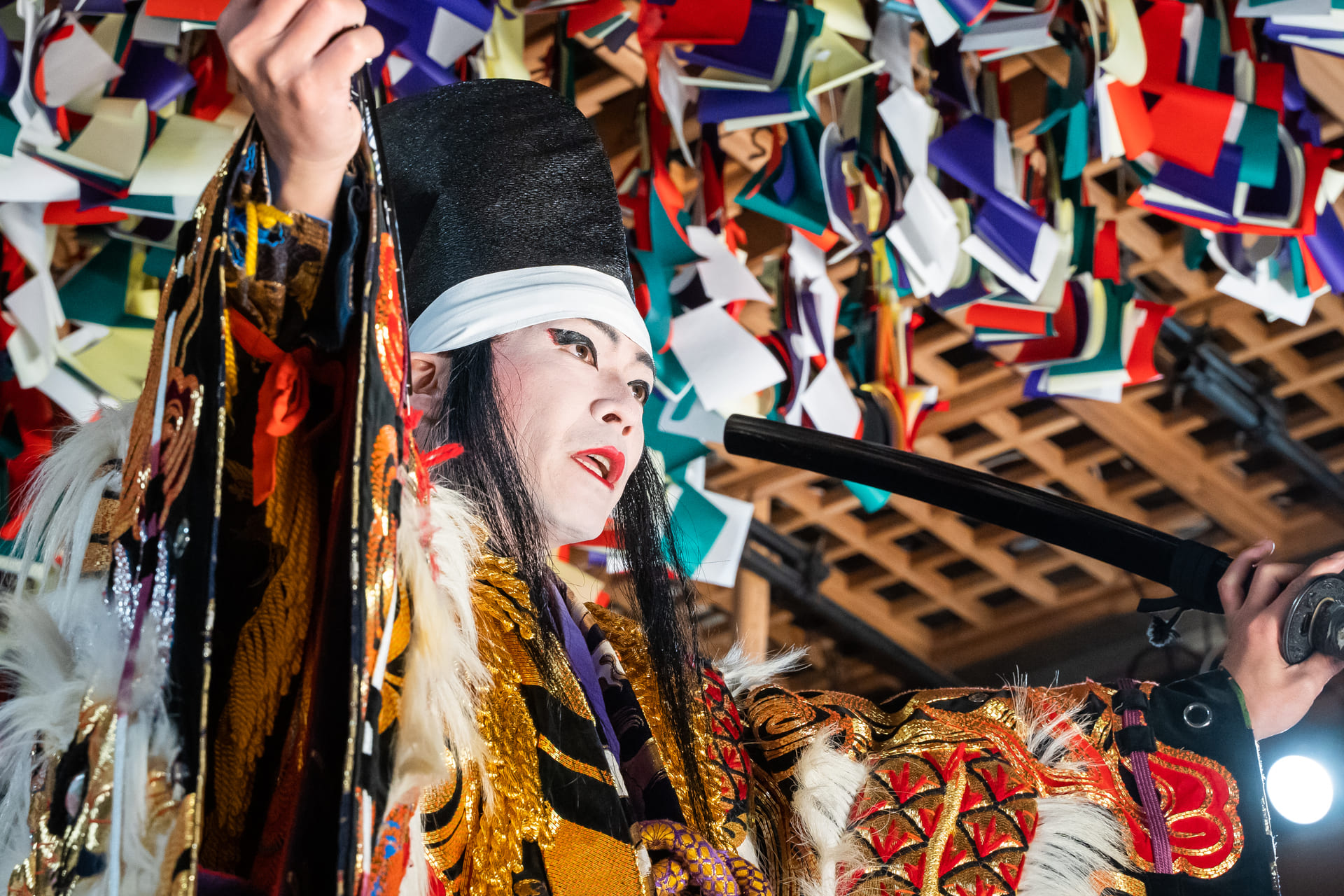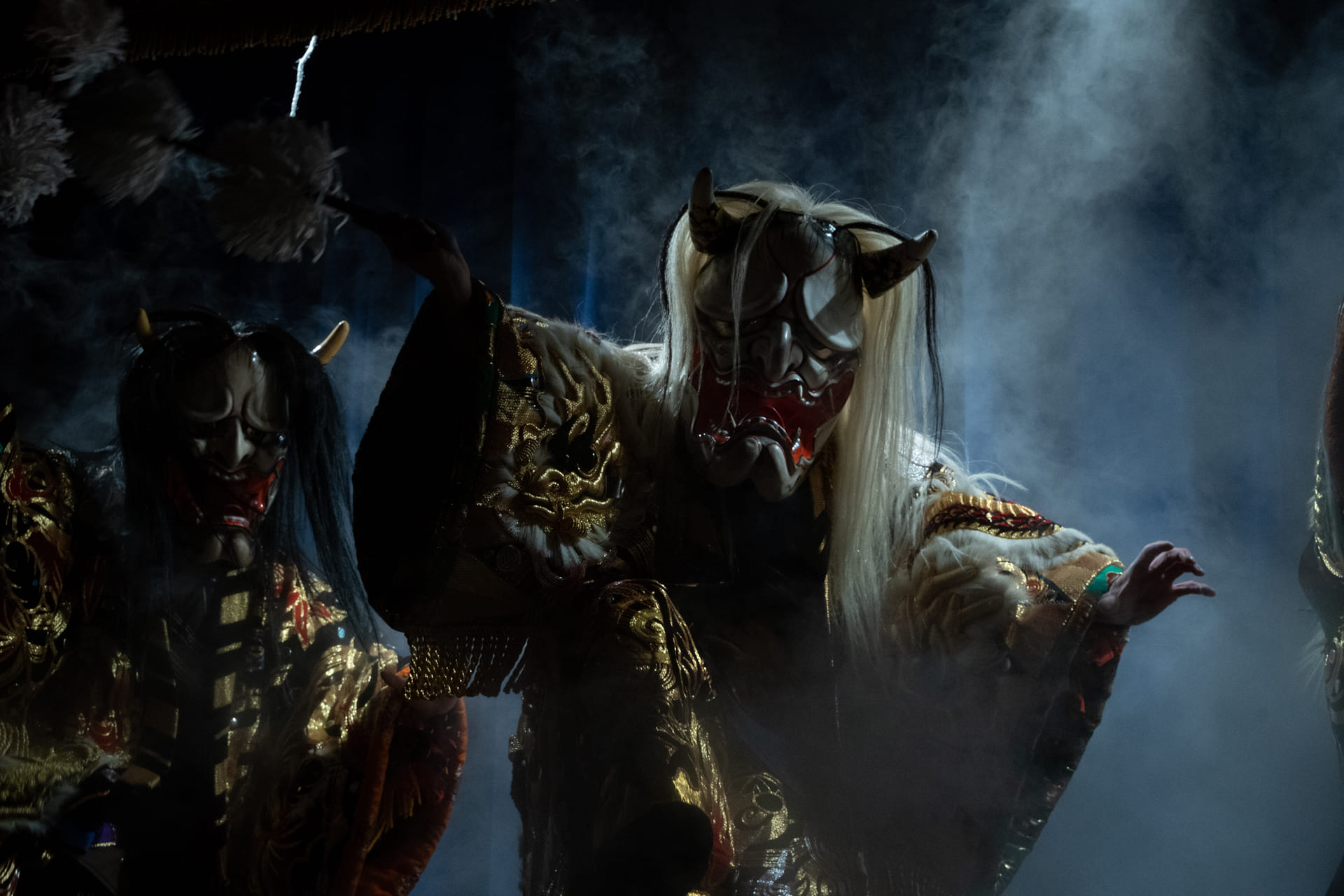What is Kagura?


Traditional performing arts that are considered to be the oldest in Japan
The history of Kagura is very old, and according to one theory, its origin dates back to the "Legend of Amanoiwato" in Japanese mythology (Kojiki and Nihon Shoki).
Dance to please the gods
The etymology of Kagura comes from the sacred place "Kamukura" that welcomes the gods. It is said that the song and dance performed in front of the god who welcomed the shrine for requiescats, fertility of five grains, dispelling disasters, and gratitude for a good harvest may have come to be called "kagura". (There are various theories)
It has been handed down against the background of the climate and culture of various parts of Japan, and has been held as a Shinto ritual dedicated to the local god. Nowadays, it is popular not only as a Shinto ritual but also as a local entertainment that is indispensable for events and celebrations.

Kagura is played by local amateurs
Kagura members who play kagura are not professionals who work in kagura.
They are on the stage by practicing after their main job or on weekends.
However, their passion is by no means inferior to professionals, and many members take pride in taking the stage as part of their lives.